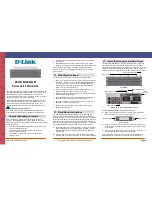
LaCie SAFE Hard Drive
User Manual
page
Glossary
erals. An operating system is the basis on which
software (applications) run. Windows, Mac OS
and UNIX are among the most common.
Overwrite
– To write data on top of existing data
thus erasing the original data.
Partition, -ing
– After formatting, the hard drive
is not yet ready to store files. It must be divided
into sections that will contain special information
required for a Mac or PC to operate and other sec-
tions that will contain the files. This process of di-
viding up the hard drive is called partitioning.
Peripheral
– A generic term applied to printers,
scanners, mice, keyboards, serial ports, graphics
cords, disk drives and other computer subsystems.
This type of peripheral often relies on its own con-
trol software, known as a peripheral driver.
RAM (Random Access Memory)
– Generally re-
ferred to as a computer’s “memory.” An integrated
circuit memory chip that allows information to be
stored and retrieved by a microprocessor or con-
troller. The information can be stored or accessed
in any order, and all storage locations are equally
accessible.
Seek Time
– The amount of time (in thousandths
of a second, or milliseconds) that it takes a hard
drive’s read/write head to move to a specific loca-
tion on the disk. Average seek, then, is the average
of a many random samplings all over the disk. Seek
time is CPU independent, meaning that seek time
is the same for a disk drive, whether it is attached
to a computer or not.
Sensor
– A device, such as a photoelectric cell, that
receives and responds to a signal or stimulus.
Software
– In a nutshell, software is a set of in-
structions for the computer. A set of instructions to
perform a particular task is called a program. There
are two main types of software: system software (an
operating system such as Mac OS or Windows)
which controls the operation of the computer and
application software (programs such as Word)
which enable users to perform tasks such as word
processing, spreadsheet creation, graphics, etc.
Storage
– In computers, any equipment in which
information may be kept. PCs generally use disk
units and other external storage media (diskettes,
CD-ROMs, magnetic disks, etc.) for permanent
storage of information.
Transfer Rate
– The rate at which the drive sends
and receives data from the controller. Transfer rates
for reading data from the disk drive may not be
the same as the transfer rate for writing data to
the disk drive. Transfer rates are CPU dependent,
meaning that regardless of how great a transfer rate
your drive is capable of, the actual transfer rate can
only be as fast as the slowest of your hard drive and
computer.
USB (Universal Serial Bus)
– An external periph-
eral interface standard used for communication be-
tween a computer and external peripherals over an
inexpensive cable.
Utility
– Software designed to perform mainte-
nance tasks on the system or its components. Ex-
amples include backup programs, programs to re-
trieve files and data on disk, programs for preparing
(or formatting) a disk or and resource editors.
Volume
– A desktop mountable storage area, may
be a partition of a hard drive, a removable disk or a
cartridge. Typically measured in MBs or GBs.

































